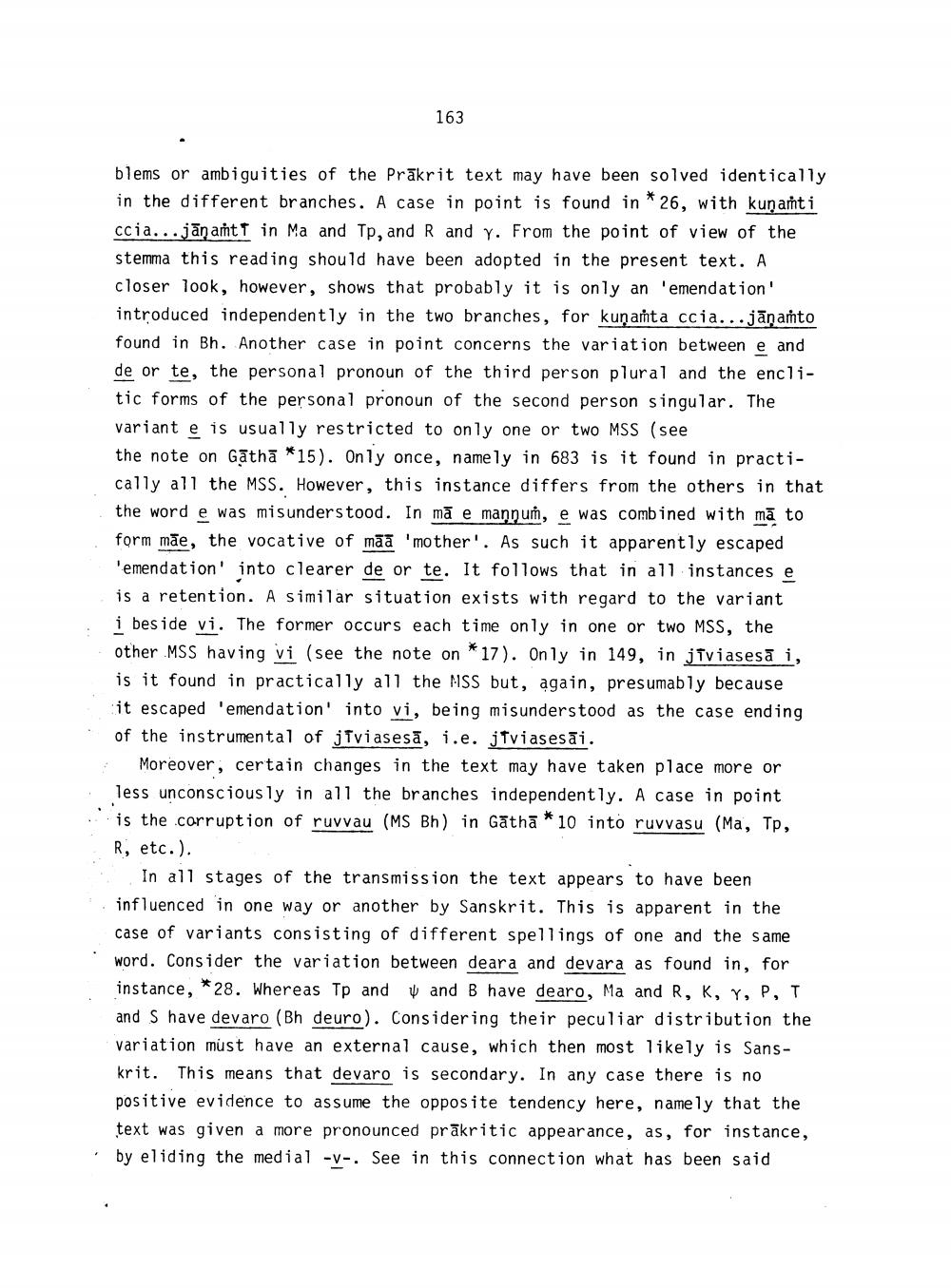________________
163
blems or ambiguities of the Prākrit text may have been solved identically in the different branches. A case in point is found in * 26, with kunati ccia... jānastT in Ma and Tp, and R and y. From the point of view of the stemma this reading should have been adopted in the present text. A closer look, however, shows that probably it is only an 'emendation' introduced independently in the two branches, for kuņamta ccia...jāņaṁto found in Bh. Another case in point concerns the variation between e and de or te, the personal pronoun of the third person plural and the enclitic forms of the personal pronoun of the second person singular. The variante is usually restricted to only one or two MSS (see the note on Gātha *15). Only once, namely in 683 is it found in practic cally all the MSS. However, this instance differs from the others in that the word e was misunderstood. In mā e mannun, e was combined with mā to form mãe, the vocative of māā 'mother'. As such it apparently escaped 'emendation' into clearer de or te. It follows that in all instances e
is a retention. A similar situation exists with regard to the variant : i beside vi. The former occurs each time only in one or two MSS, the
other MSS having vi (see the note on *17). Only in 149, in jTviasesa i, is it found in practically all the MSS but, again, presumably because it escaped 'emendation' into vi, being misunderstood as the case ending of the instrumental of jTviasesā, i.e. jfviasesai.
Moreover, certain changes in the text may have taken place more or less unconsciously in all the branches independently. A case in point is the .corruption of ruvvau (MS Bh) in Gātha * 10 into ruvvasu (Ma, Tp, R, etc.).
In all stages of the transmission the text appears to have been influenced in one way or another by Sanskrit. This is apparent in the case of variants consisting of different spellings of one and the same word. Consider the variation between deara and devara as found in, for instance, *28. Whereas Tp and and B have dearo, Ma and R, K, Y, P, T and S have devaro (Bh deuro). Considering their peculiar distribution the variation must have an external cause, which then most likely is Sanskrit. This means that devaro is secondary. In any case there is no positive evidence to assume the opposite tendency here, namely that the
text was given a more pronounced prākritic appearance, as, for instance, • by eliding the medial -v-. See in this connection what has been said




